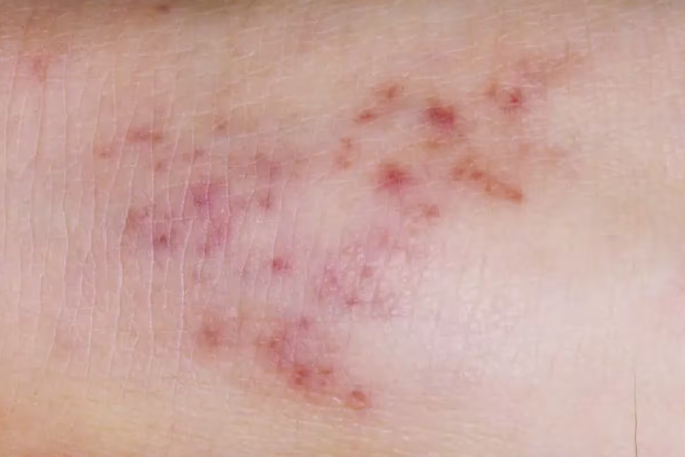New data shows despite a 35% fall in the total number of meningococcal disease cases compared to the same period the previous year, Māori infants and toddlers remain at a higher risk of the disease.
According to the Institute of Environmental Science and Research (ESR) data, the number of cases has fallen from 43 in 2023 to 28 at the same time this year.
Māori make up 36% of meningococcal disease cases so far this year and 6 of the eight cases aged under 5 years were Māori - making it the highest number of any age group.
In contrast, the number of cases of the disease among teens aged 15-19 has dropped by 44% of those recorded last year.[6][7]
The highest number of cases reported in 2024 are from the Auckland region (36%), followed by Northland, Waikato and Lakes (Rotorua). Hutt Valley, Southland, Bay of Plenty, Taranaki, Hawke’s Bay, Canterbury and the West Coast have also recorded cases this year.
Meningococcal disease is an uncommon but life-threatening bacterial infection causing two serious illnesses: meningitis (an inflammation of the membranes around the brain) and septicaemia (blood infection).
In New Zealand, meningococcal disease follows a seasonal pattern with case numbers peaking in winter and continuing into spring.
Despite medical care, around one in every 10 patients who contract the disease will die, and up to one in five survivors will have permanent disabilities, such as brain damage, amputated limbs and hearing loss.
There are several types or serogroups of meningococcal bacteria including groups A, B, C, W and Y. The most common in New Zealand is meningococcal group B.*
Symptoms of meningococcal disease can develop rapidly.
The first symptoms are usually fever, vomiting, headache and feeling unwell. This can progress rapidly to a non-blanching rash (which doesn’t fade when a glass is rolled over it), neck stiffness, dislike of bright lights and confusion.
New Zealand has a higher overall rate of invasive meningococcal disease compared with other developed countries with national immunisation programmes, and the rate of disease has increased from 2015-2019, until the Covid pandemic.
 Gerard Rushton knows how devastating meningitis can be after losing his daughter in 2014. Photo supplied.
Gerard Rushton knows how devastating meningitis can be after losing his daughter in 2014. Photo supplied.
Gerard Rushton, Meningitis Foundation Aotearoa New Zealand chair, says while it is good to see widened access to the meningococcal B vaccine since 2023, it was still concerning to see other vulnerable groups being left behind in terms of disease protection.
Rushton and his wife Claire lost their daughter Courtenay, aged 16, in 2014 after she contracted meningitis.
“We can see from the latest data that the uptake for toddlers isn’t quite as good, in addition to this we can also see that Māori infants and adolescents are still at risk,” he says.
Rushton says there is still much more work to be done to educate Kiwis and their whānau on the dangers of meningococcal disease.
“Meningitis is a disease that progresses very quickly and can result in death and disability. We need to ensure that parents, health care workers, teachers, friends and family members know the signs and act quickly.”
The meningococcal B vaccine, Bexsero, is funded for those 13-25 who are entering within the next three months or in their first year of close-living situations such as hostels, boarding schools, halls of residence and the military. It is also funded as part of scheduled childhood immunisations for children up to 12 months of age with a catch-up programme available for 13-59-month-olds until August 31, 2025.
Rushton says the current funding programme does not do enough to protect young people and is calling for free vaccination for all preventable forms of meningococcal disease provided to students aged 16 (Year 11) before they leave school and go into trades, work or study.
“We also need to see a widespread education campaign to help inform adolescents of the symptoms of the disease and warn them of the risks of contracting it by sharing drinks and vapes and attending large-scale events like festivals.”



1 comment
Why keep on mentioning Maori
Posted on 04-10-2024 09:06 | By SonnyJim
Pacifica peoples have an unresolved susceptibility history to some ailments, and reports continue to comment on this using statistics the wrong way by highlighting susceptibility as some sort of failure to prevent infection. A recent report puts the conundrum this way - "In New Zealand, rates of both meningococcal and pneumoccocal disease are higher in Maori and Pacific Island children than in Caucasian children, suggesting that common, yet unknown mechanisms may explain the high susceptibility to both pathogens." The report then throws in conjecture that - "These may include both genetic as well as non-genetic risk factors such as overcrowding". Surely this should have been resolved by now?
Leave a Comment
You must be logged in to make a comment.